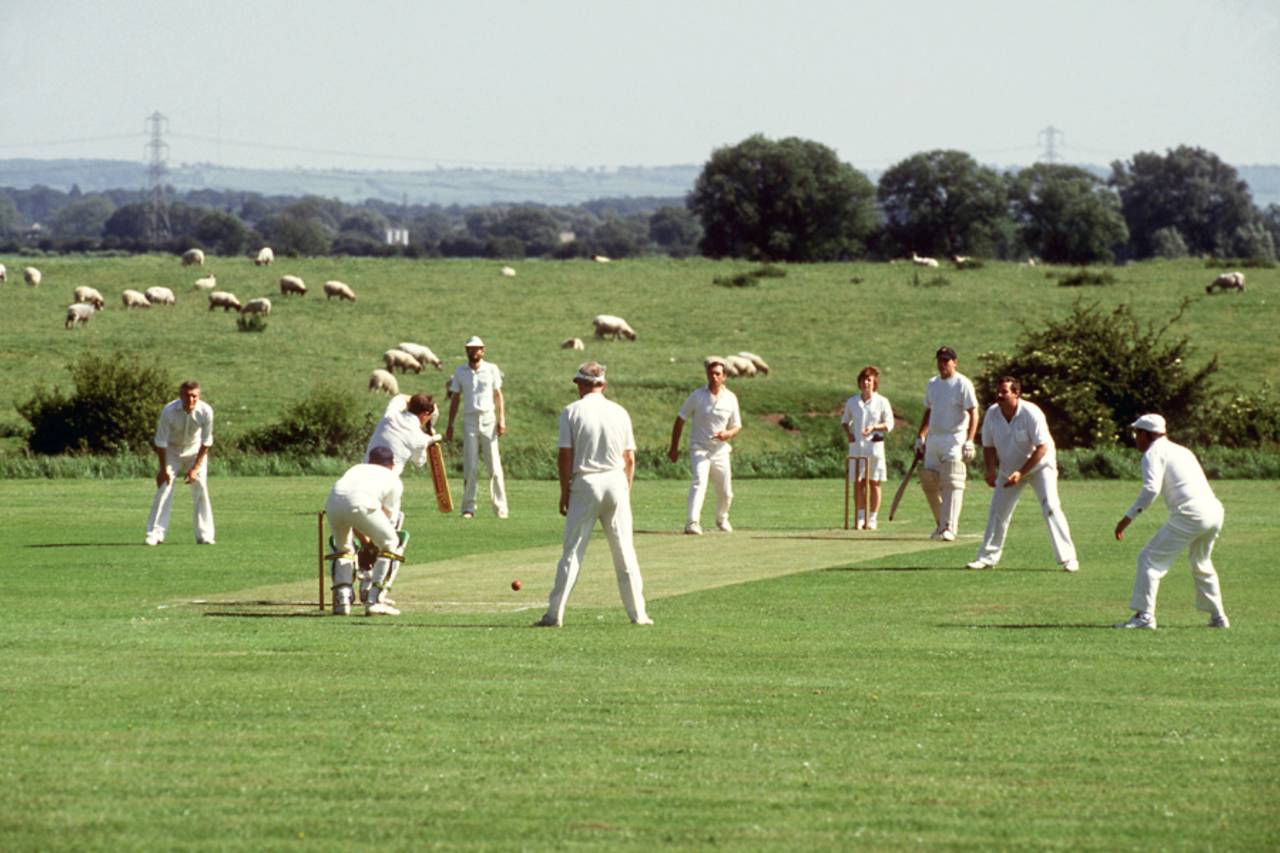If you have walked out to bat with your thigh pad outside of tracksuit bottoms, you've looked it. If you have been at mid-off and let a routine defensive push pass through your legs for a single, you've acted it. If you regard the two above indiscretions as "no big deal", then you'd be considered it.
Village.
For the British cricketer, both amateur and professional, it is the ultimate slur; a slight on one's value, a dig at the class of a player. The word that provides the teeth for the saw that hacks at one's perch, often wielded by the same team-mate who lent you his black trainers. Never again will you forget to bring yours in from the garden after a week of airing them out. But it's too late by then, because you've already looked so village.
The notion is based more on style than substance. A decent score brought about through leg-side hacks, or a collection of junk wickets secured through long hops, are all part of the game's essential aim - revelling in the misfortune of others, the other side of which coin is the lucky nature of one's own success. But a match-turning five wickets or a square-drive-filled hundred executed in black socks is ultimately worthless.
Village cricket is regarded as a quaint, uncompetitive entity, where a white polo shirt is fine, one match ball will do, and a forearm sweatband is deemed unnecessary. Even the most substandard club cricketer can turn his nose up at village cricket; his two years bowling wides in Cricket Scotland's Mary indoor school in a desperate attempt to justify his decision to spend a disproportionate amount of his student loan on University of Edinburgh stash, has given him that right.
The universal nature of the term, both its use and, well, "application", is refreshing. In the summer just gone, a senior ECB official grumbled that a particularly poor piece of fielding in the County Championship was "f***ing village", while a county that had ordered too much kit one year had to carry over for another season a nickname that they had planned to bin. Across the world, the connotations of what it is to be "village" endures in each tongue.
The closest literal translation is found in Australia, where an offender against the stylistic rules - no helmet, or one too many stars in their Southern Cross tattoo - may be dubbed "amateur". In South Africa, "boemish" (slang for "stupid") does the job. The Sinhala "anthimai" - essentially, "the worst" - is regularly thrown about by the Sri Lankan team.
Perhaps unsurprisingly, it is in Pakistan where we find the blurriest lines between villager and viscount. Their term of abhorrence is galli cricket - galli being the Hindi/Urdu for "street". Many of those within the Pakistan system spent their formative years in this setting and, as such, the term is used to suggest that the person on the end of it "should know better". How apt.
In Australia, an offender against the stylistic rules - no helmet, or one too many stars in their Southern Cross tattoo - may be dubbed "amateur". In South Africa, "boemish" (slang for "stupid") does the job
In the last year alone, the country's international stars have displayed some exceptionally village moments.
While playing for Worcestershire, Saeed Ajmal would turn up for Championship matches dressed in his full whites. During Pakistan's first ODI against Australia in Sharjah, Fawad Alam not only bowled with a cap, but also had the gall(i) to wear it back to front. A few days later, Sarfraz Ahmed no doubt drew a few calls of "amateur" from the Australian fielders when he removed his helmet to celebrate scoring a half-century. Geez, what a snuff…
But cricket is not alone in portraying disdain of what it perceives as outlandish amateurism. In art circles, the word "provincial" is used to belittle everything from entire collections, to an individual's tastes. The implication is that art from the regions, or provinces, outside of the cities, where ideas are shared and trends are born, is of less worth. Provincial art is devoid of the intellect and refinement of urban society, they say.
One man who draws the biggest debate on provincial art is LS Lowry. With much of his work centred around his home town of Pendlebury and the Salford area, he has often been dismissed as simple and dull. His is seemingly a simplistic eye, with a mind that can only recreate what the eyes see. However, there is the view that Lowry's work is purer than others in that it lacks pretence - that he has approached his profession with no preconceptions or worries.
During a lecture given in 2007 on the "provincial loneliness" of Lowry, Manchester-based novelist Howard Jacobson argued that it was the artist's sense of drifting, of "not belonging to life", that gave his work an unrivalled familiarity. To him, Lowry's work spoke of a man who wasn't sure why he did what he did but wanted to continue doing it anyway. "Perhaps such things are familiar to all of us," Jacobson concluded.
And therein lies the crux of what it is to be "village".
It is to be unsure of cricket - this excruciatingly nonsensical sport - its whims and unwritten rules, but to want more.
To just spend your Saturday aiming for cow corner with the club bat (a Harrow, naturally), as you push for every single in a battle between the grassy outers of the pitch and the perished soles of your Reebok Classics.
"Runs?" they ask at the bar, with their oversized Gunn & Moore bags, three bats and power-band-adorned wrists. "Yeah," you reply, "Seven. What of it?"
At a time when cricket seems more out of touch than ever, it is in the game's inherent amateurism that we can take solace, even in its darkest hours.
Surely and truly, the world would be a better place if it was all a bit village.
